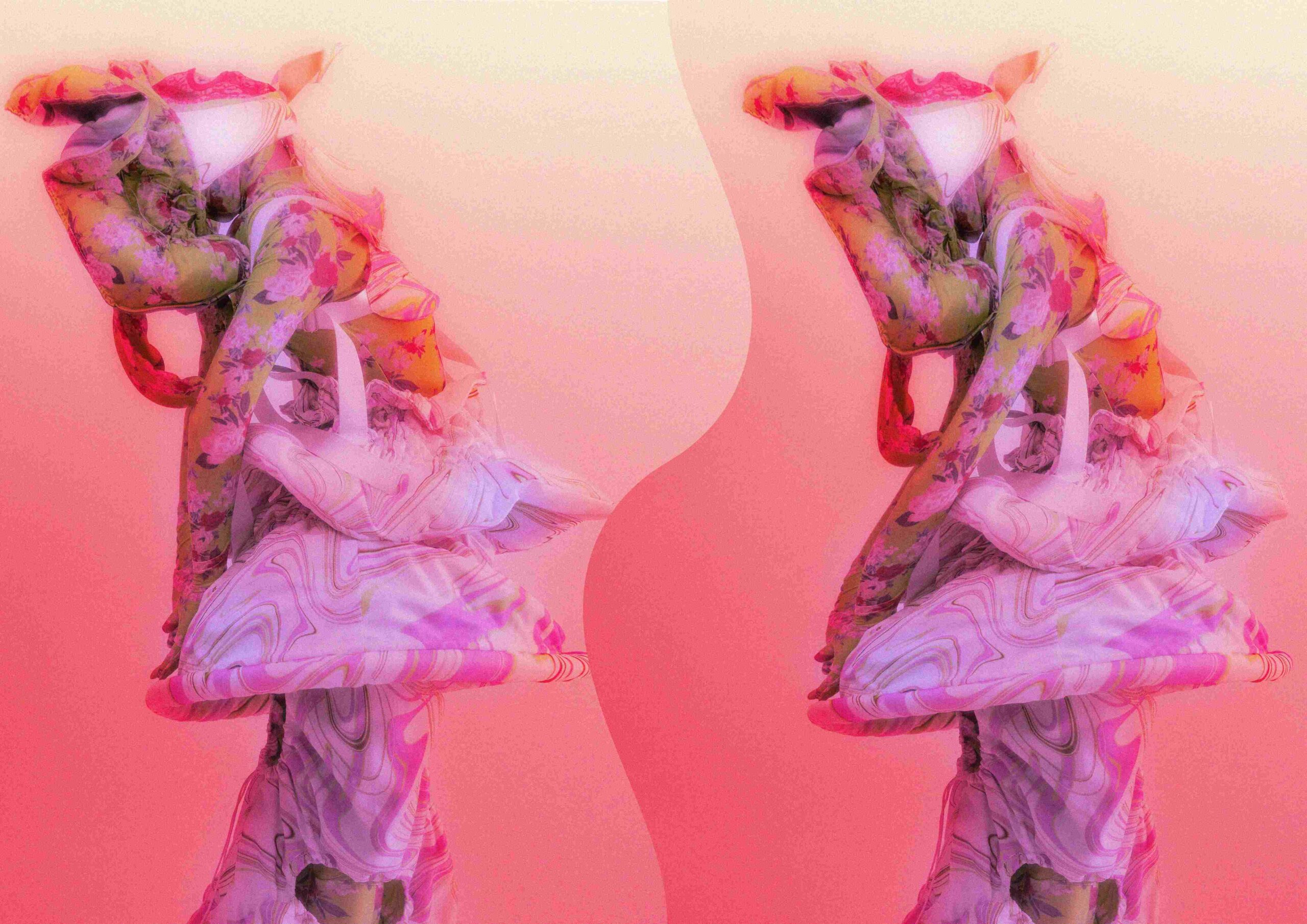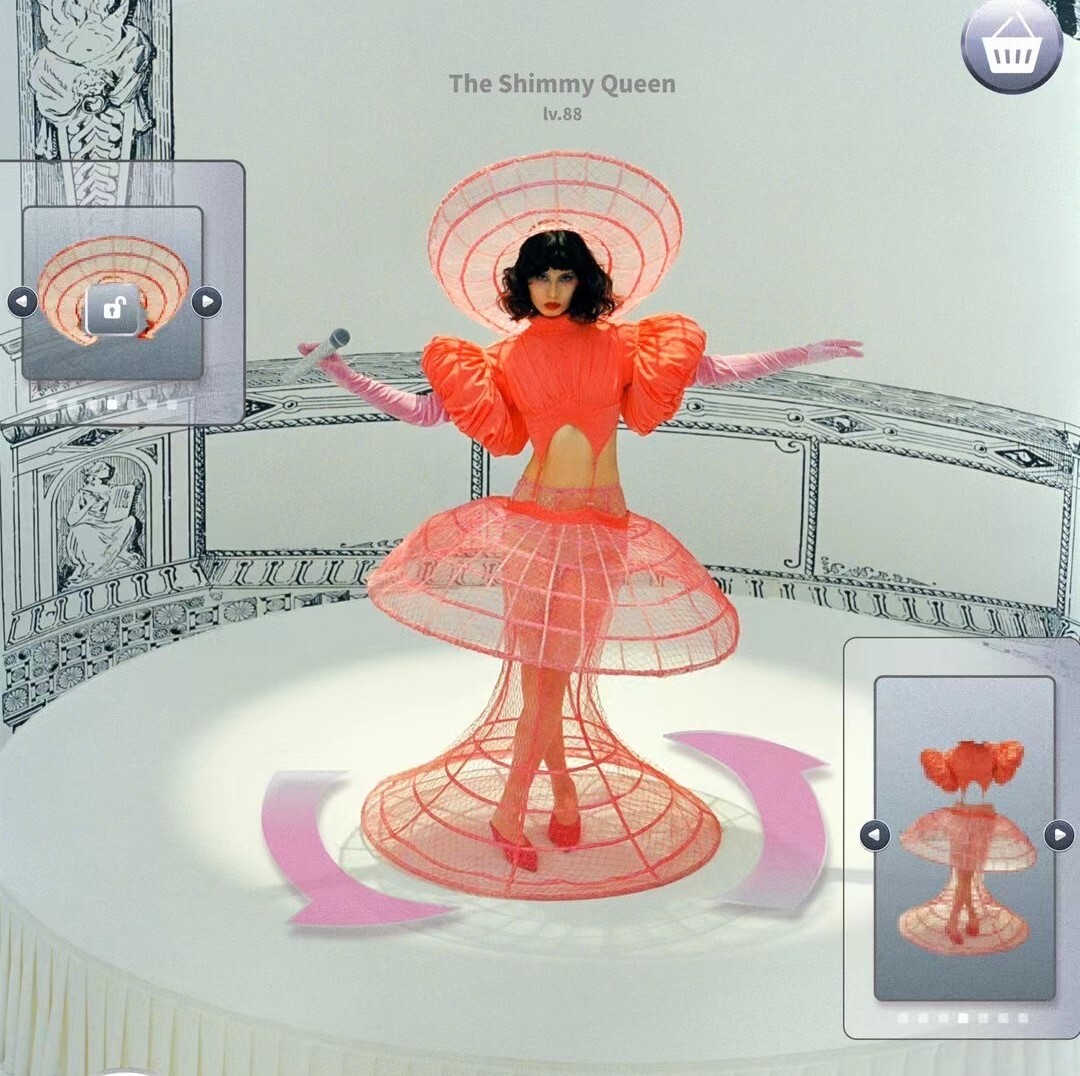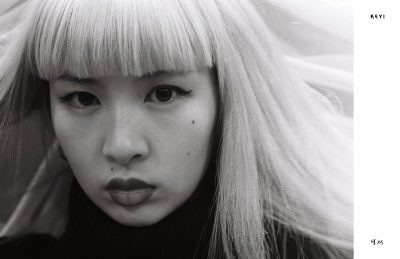
Yinglin He and her eponymous brand capture a curious spirit, with a constant desire to change and evolve. We sat down with Yinglin He to discover more about what drives her unique designs.
What have you and your brand been up to recently, any new projects in the work?
I’m just trying to work on the APOC orders which is what I’ve been selling on. Actually, I’ve also been working on the Amiri prize, so I’ve been focusing on submitting that with my brand as well.
I can imagine that has been a lot of work! How have you found this APOC as an online platform, has it been an adjustment?
They’ve been great. They are very accommodating and helpful, but I’m trying to focus on getting new stuff on there right now. The stuff that I have on it’s been over a year now and I have a few items that are ready to be sold. I’m still doing made-to-orders which has been pretty hard, and I mainly ship to the US and some to European countries. But it’s okay. It has been a little bit challenging as I’m working on everything by myself, but yeah, it’s been fun.
Your brand, YINGLIN HE, has only been around for a few years. What is one word you use to describe kind of your label itself for those of us who may not know much about it?
I would say, like, curious. I would say curious. Yeah.

Your brand really showcases this curious nature through your constant focus on experimentation. You are constantly experimenting with new textiles and silhouettes; how do you go about that process of figuring out what kind of area you want to focus on for your designs?
When it comes to ready-to-wear designs, they came about because of a grant that I was applying for at the time. I didn’t really have any ready-to-wear items to be sold. I just submitted my work prior, which is more conceptual. So, I had never made anything like what I’m making now. It was a push for me. It was a nice challenge. And I was thinking, how can I translate these visual languages into something that I would want to wear, that I would like, and not lose the essence of the previous, more conceptual collections that I have? And then I came up with a couple of new items. I wouldn’t even call them a collection. I think this approach is becoming more common amongst designers, I think people are not really going for a whole collection. It’s just like what items that you enjoy that sparks to you, that people enjoy. I really like that part. I think going forward, obviously, I’m going to release more items, but I just like to be inspired, not restricted by season or collection.

Whether it’s your older more conceptual collections, or your recent ready-to-wear designs, you continue to focus on sustainability. Could you kind of delve more into that? What does this idea of sustainability mean for you? What does sustainable fashion mean for your brand?
Sustainability for me is very tricky because whether you’re a big brand or a smaller designer, as long as you’re producing, It’s, unfortunately, nothing like ultimate sustainability. You’re still producing and creating waste. However, you can upcycle. For me, I would try to upcycle my materials and it also adds an interesting challenge. There are so many unexpected issues. If you upcycle your materials or reuse your material, you don’t necessarily have all the right pieces to complete a design, rather than if you bought the fabric new. I find that interesting. I’m trying to gather more resources, maybe even develop my own sustainable fabric or textile one day.
Yeah, I saw that last year you started looking into a textile collection made from previous fabric scraps of your older collections. Can you tell us a little bit more about this process? How did you find it? Did you find it kind of difficult and different to how you previously produced clothes in the past?
It’s definitely challenging. When you do come up with a concept, you need to make sure that you have enough fabric, and the right kind of fabric to create what you want. And I have to keep adjusting the designs because I want to use the scraps. I don’t want to waste what I had. But it’s been a good challenge you don’t necessarily have to stick to your original idea, it constantly changes. And, as I said before, it’s like a good challenge if you don’t have to come up with completely brand new, but something like comes of that element. Inspired by your previous work. Some ideas will come to you because of the restriction that you have. It becomes like an advantage to you. That’s how it feels.

Between your two collections, Vol. 1 and Vol.2. Your style has changed a lot, from volume two to volume one to your kind of ready-to-wear made. What have you learned in between each one? How do you feel this has influenced your style?
I think the biggest thing I learned is I don’t really want to be defined. One of the designers doing the grant, her name is Hannah Jewett. She makes jewellery. I believe you’ve seen her on social media. She makes these amazing abstract rings and accessories. I explained to her, I’m a little bit scared sometimes that if I want to experiment with something different, it would not look like me, it would not be consistent. And she’s like, no, it comes from you. There’s nothing that you can do to make it not consistent. If you really want to try to explore and experiment, just do it. And then it was really comforting because that’s what I see when I see other designers. Like, oh, my God. Everybody’s designs are so consistent. It’s a progression, and I don’t see that in myself sometimes. But at the end of the day, it’s my thoughts, it’s my work, I shouldn’t restrict myself. I don’t want to end up doing the same thing. There’s no fun to it. So, I try to explore different things, but I have to remember I’m just a small, independent designer. There is not, like, much expected of me, and I really like that aspect, and I just try to explore what I can.
You mentioned accessories, and I noticed you recently released your jewellery line on the APOC store last October. How did you find that transition from kind of clothing to accessories? How was that for you?
Accessories are a much easier element for me. Accessories are just something that I see as an artistic object, more like a sculpture or I don’t see it really related to garments like shoes. I don’t really have much experience prior to my recent collection. I’m just learning alongside the people that I work with. The jewellery artist that cast my jewellery, I learn alongside them. I don’t have experience in making shoes, but the shoemakers tell me how to pick the heel, and how the heel works, and it’s been fun. I really like that aspect of just learning alongside the journey. And because of the kind of ignorance part of it all, it gives me less restriction of what I want to do. So, I want to keep doing that and want to integrate some of the jewellery into the clothing. Some of the parts, like zipper poles or even belts. I did one of the belt chains before. I want to keep doing that. That has been fun. And just some of the connecting parts of the garment. Or I want to make handbags, like the handle of it. Just try to make things unique by creating something new.

Obviously, when it comes to your brand, your kind of have been developing it over the last few years. What is your kind of greatest source of inspiration? Is there anyone in the field that you kind of look to, or is it always changing?
I see inspiration as another part of personal growth and just another part of me, I guess, because I don’t tend to pick anything specific that inspires me. I think this is something I do want to try, as I’ve never picked a specific topic for any of the things that I make. It’s just at that stage of my life, things that I like or the emotion that I feel, I kind of use that into what I make because that comes the most naturally to me. That’s mostly how I’m doing it right now, but it’s not the only way to go about it, or it’s not like I’m not going to change anymore. I am always changing.
I can really see the personal growth reflecting in both your recent and previous works. What is one of the biggest or most influential accomplishments of the YINGLIN HE brand?
I really like the event that I did two years ago. It was in New York. There was like a little exhibition with another platform called AP0CENE, which I’m not on, but they hosted the event. It was so much fun. They were introducing the idea of physical cryptocurrency, which was ahead of the recent trend. It was like 2020 or 2019. We didn’t end up doing the garment itself and selling it as NFT, but it was an interesting start to the idea of intro to integrating garments into the NFT world. And I got to showcase my work and that was exciting. I hope to join more of those kinds of showcasing events and hopefully showrooms. And my big goal is to get maybe wholesale partners because of the difficulty of doing made-to-orders due to the amount of time it takes to complete.

Yes, I saw your conceptual work and thought your NFT designs were really impressive. Do you think NFTs could be something you investigate more in the future? How do you feel about that kind of new fashion era for fashion?
It’s unavoidable. Whether you like it or not, it’s coming. And I still have not yet, I would say, found my own way into that world. But I am interested in doing so because I really love 3D fashion, just the 3D digital world in general. And I have friends that work as graphic designers and they produce amazing projects like doing graphics or 3D work for posters or even virtual videos. I’m really excited to find out how I can function in that world.
So, as a young designer who’s constantly evolving alongside your designs, what do you see in the future for both you and your brand?
As I said, I’m hoping to develop more items a little bit more systematically at the end of the day. And I would look forward to having wholesale partners. I’m also hoping to gain more exposure for the brand, and just be overall a little bit more mature of a brand and keep branching out into accessories, which I really enjoy. So, still looking into accessories and footwear. Oh, and collaborating, I think, with other designers would be really interesting. And I mean, obviously, bigger brands as well, because that would be exciting to bring my own perspective into, you know, existing bigger brands that have their already established image. I would love to bring my vision into something that’s already existing and see if people like it.

Interview: Yinglin He
Follow via Instagram: @y1nglin
Author: Emily Fromant
more fashion stories -> click here






